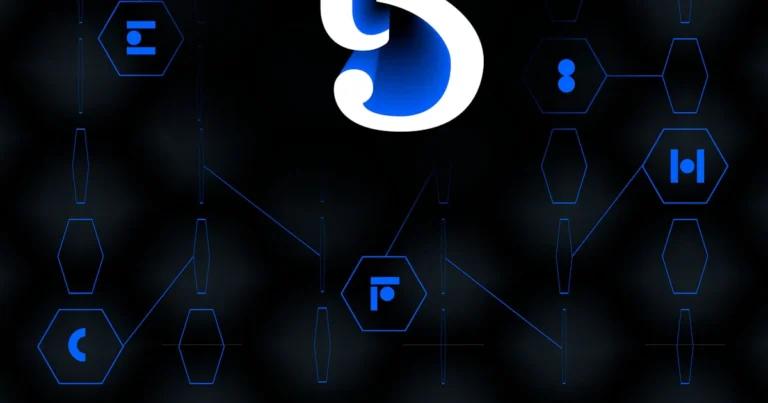Support our educational content for free when you purchase through links on our site. Learn more
What Game Framework Should I Use? Top 12 Picks for 2025 🎮
Choosing the perfect game framework can feel like navigating a labyrinth blindfolded — with dozens of options, each promising to be the magic wand for your next hit game. Did you know that over 34% of the top mobile games are built using Unity alone? Yet, the indie darling Godot is rapidly gaining ground thanks to its open-source flexibility and zero licensing fees. So, how do you pick the right one for your project without getting lost in jargon or sunk costs?
In this comprehensive guide, we unravel the mystery behind game frameworks — from lightweight 2D engines to AAA-grade powerhouses — and help you match your game’s genre, platform, and team size with the perfect toolkit. Whether you’re an indie developer dreaming of your breakout hit or part of a AAA studio chasing photorealistic graphics, we’ve got you covered with expert insights, pros and cons, and real-world stories. Ready to discover which framework will bring your game to life in 2025? Let’s dive in!
Key Takeaways
- Game frameworks differ from engines: frameworks offer flexible code libraries, while engines provide all-in-one tools and editors.
- Top frameworks in 2025 include Godot, Unity, and Unreal Engine, each excelling in different areas like cost, ease of use, or graphics power.
- Your choice depends on game genre, target platform, and team size — 2D mobile games favor lightweight frameworks; AAA titles need robust engines.
- Licensing and community support are crucial — open-source options like Godot save money, while Unity and Unreal offer vast ecosystems.
- Cross-platform support and plugin integration can make or break your development process.
👉 CHECK PRICE on:
- Godot Engine: Godot Official Website | Amazon Books
- Unity: Unity Official Website | Unity Asset Store | Amazon Books
- Unreal Engine: Unreal Engine Official | Unreal Marketplace | Amazon Books
Table of Contents
- Quick Tips and Facts ⚡
- Game Frameworks 101: Understanding Your Options 🎮
- 1. Top 12 Game Frameworks to Consider in 2024 🏆
- 2. Comparing Game Engines vs. Game Frameworks: What’s the Difference? 🔍
- 3. Choosing the Right Framework Based on Your Game Genre and Platform 🎯
- 4. Programming Languages and Tools Behind Popular Game Frameworks 💻
- 5. Performance, Scalability, and User Experience: What Matters Most? 🚀
- 6. Licensing, Community Support, and Documentation: Why They’re Game Changers 📚
- 7. Indie Developers vs. AAA Studios: Tailoring Your Framework Choice 🕹️
- 8. Cross-Platform Development: Making Your Game Reach Everywhere 🌍
- 9. Integrating Third-Party Plugins and Middleware: Boost Your Game’s Power 🔌
- 10. Future-Proofing Your Game: Trends and Innovations in Game Frameworks 🔮
- Game Development Resources & Communities to Level Up Your Skills 📚
- Elevate Your Game’s Performance and User Experience: Pro Tips from Experts 🎓
- Tags: Game Development, Game Frameworks, Game Engines, Cross-Platform, Indie Games, AAA Games, Programming Languages
- Conclusion: Making the Best Choice for Your Game Framework 🏁
- Recommended Links for Game Developers 🌐
- FAQ: Your Burning Questions About Game Frameworks Answered 🔥
- Reference Links and Further Reading 📖
Quick Tips and Facts ⚡
Before you dive headfirst into the vast ocean of game frameworks, let’s drop some quick nuggets of wisdom from our dev cave at Stack Interface™. Whether you’re a solo indie dev or part of a AAA studio, knowing these facts upfront will save you headaches and wasted hours:
- ✅ Game frameworks vs. game engines: Frameworks provide a flexible base with libraries and APIs, while engines are more all-in-one solutions with built-in editors and tools.
- ✅ Language matters: Your comfort with programming languages like C#, C++, JavaScript, or Python can make or break your experience.
- ✅ Platform support: Mobile, desktop, web, or consoles? Not all frameworks play nice everywhere.
- ✅ Community & documentation: A vibrant community and solid docs are your lifelines when you hit bugs or need creative inspiration.
- ✅ Licensing and royalties: Some frameworks are free and open-source (Godot), others like Unreal have royalty models, and some require subscriptions (Unity Pro).
- ✅ Performance trade-offs: Lightweight frameworks (like Cocos2d-x) excel at 2D mobile games, while heavy hitters (Unreal) dominate 3D AAA titles.
- ✅ Cross-platform ease: Frameworks like Unity and Godot shine here, letting you build once and deploy everywhere.
- ✅ Rapid prototyping: Tools like GameMaker or Construct 3 let you build fast without deep coding skills.
Want a deep dive on the best video game frameworks? Check out our detailed guide here for the full scoop!
Game Frameworks 101: Understanding Your Options 🎮
What Exactly Is a Game Framework?
Think of a game framework as the skeleton and muscles of your game — it provides the essential building blocks like rendering, input handling, physics, and audio, but leaves the creative flesh to you. Unlike full-fledged game engines, frameworks often require more coding but offer greater flexibility and control.
Why Choose a Framework Over an Engine?
- Customization: Frameworks let you handcraft your game’s architecture without being boxed into an engine’s workflow.
- Lightweight: They often have smaller footprints, ideal for mobile or web games.
- Learning Curve: Frameworks can be simpler or more complex depending on your coding skills and project scope.
- Open Source Options: Many frameworks are open source, giving you full access to tweak and optimize.
Popular Framework Types
- 2D-focused: Cocos2d-x, Phaser, LibGDX
- 3D-capable: Three.js (web), MonoGame, Urho3D
- Cross-platform: Godot, Unity (hybrid engine/framework), AppGameKit
1. Top 12 Game Frameworks to Consider in 2024 🏆
Here’s our expert rating table for the top game frameworks based on design, functionality, ease of use, community, and cross-platform support:
| Framework | Design (1-10) | Functionality (1-10) | Ease of Use (1-10) | Community (1-10) | Cross-Platform (1-10) | Overall (1-10) |
|---|---|---|---|---|---|---|
| Godot | 9 | 9 | 8 | 9 | 9 | 9 |
| Unity | 9 | 10 | 7 | 10 | 10 | 9 |
| Unreal | 10 | 10 | 6 | 10 | 9 | 8.8 |
| Cocos2d-x | 7 | 8 | 7 | 8 | 9 | 7.8 |
| MonoGame | 7 | 8 | 6 | 7 | 8 | 7.2 |
| Phaser | 7 | 7 | 9 | 7 | 8 | 7.6 |
| AppGameKit | 7 | 7 | 8 | 6 | 8 | 7.2 |
| CryEngine | 9 | 9 | 5 | 7 | 7 | 7.4 |
| Amazon Lumberyard | 8 | 8 | 6 | 6 | 8 | 7 |
| GameMaker | 6 | 6 | 10 | 7 | 6 | 7 |
| Construct 3 | 6 | 6 | 10 | 6 | 7 | 6.8 |
| LibGDX | 7 | 7 | 6 | 7 | 8 | 7 |
Godot: The Indie Darling
- Why we love it: Completely free, open source, with a friendly scene system and visual editor. Perfect for 2D and 3D projects.
- Drawbacks: Slightly steeper learning curve for 3D and smaller marketplace than Unity.
- Real-world use: Used by studios like Rock Milk and indie hits like City Game Studio.
- Learn more: Godot Official
Unity: The Versatile Powerhouse
- Why we love it: Massive asset store, huge community, supports 2D, 3D, AR/VR, and mobile.
- Drawbacks: Subscription costs for pro features, can be heavy on resources.
- Real-world use: Pokémon GO, Super Mario Run, and 34% of top mobile games use Unity.
- Learn more: Unity Official
Unreal Engine: AAA-Grade Graphics
- Why we love it: Stunning visuals, powerful C++ backend, and Blueprints visual scripting.
- Drawbacks: Steep learning curve, royalty fees after revenue threshold.
- Real-world use: Batman: Arkham Origins, Infinity Blade 3.
- Learn more: Unreal Engine Official
2. Comparing Game Engines vs. Game Frameworks: What’s the Difference? 🔍
Frameworks: The Flexible Foundations
- Provide libraries and APIs for graphics, audio, input, and physics.
- Require you to write more code, giving you granular control.
- Examples: Phaser (JavaScript), MonoGame (C#), Cocos2d-x (C++).
Engines: The All-in-One Powerhouses
- Include editors, asset pipelines, physics engines, animation tools, and more.
- Often come with visual scripting (e.g., Unreal’s Blueprints).
- Examples: Unity, Unreal, Godot (blurs the line).
When to Choose Which?
| Scenario | Framework ✅ | Engine ✅ |
|---|---|---|
| You want full control over code | ✅ | ❌ |
| You want rapid prototyping | ❌ | ✅ |
| You have a team with artists/devs | ❌ | ✅ |
| You’re building a simple 2D game | ✅ | ✅ |
| You want cross-platform support | ✅ | ✅ |
3. Choosing the Right Framework Based on Your Game Genre and Platform 🎯
Match Your Framework to Your Game Type
- 2D Platformers & Casual Games: Cocos2d-x, Phaser, GameMaker
- 3D Action & AAA Titles: Unreal Engine, Unity, CryEngine
- Mobile Games: Unity, Godot, AppGameKit
- Web Games: Phaser, Construct 3, Three.js
- VR/AR Experiences: Unity, Unreal Engine
Platform Considerations
| Platform | Recommended Frameworks | Notes |
|---|---|---|
| iOS & Android | Unity, Godot, Cocos2d-x, AppGameKit | Mobile optimization is key |
| Windows & Mac | Unreal, Unity, Godot, MonoGame | Powerful hardware allows heavier engines |
| Web Browsers | Phaser, Construct 3, Three.js | Lightweight, HTML5/JavaScript based |
| Consoles | Unreal, Unity, CryEngine | Requires licensing and SDK access |
4. Programming Languages and Tools Behind Popular Game Frameworks 💻
Language Breakdown
| Framework | Primary Language(s) | Scripting Support | Notes |
|---|---|---|---|
| Unity | C# | Yes | Uses Mono/.NET, strong IDE support |
| Unreal Engine | C++ | Blueprints (visual scripting) | Powerful but steep learning curve |
| Godot | GDScript (Python-like), C# | Yes | Flexible, open source |
| Cocos2d-x | C++, Lua, JavaScript | Yes | Great for 2D games |
| Phaser | JavaScript | N/A | Web-focused, easy to learn |
| MonoGame | C# | Yes | Open source XNA alternative |
| AppGameKit | AGK Script, C++ | Yes | Cross-platform, fast iteration |
Tools That Make Life Easier
- Visual Editors: Unity Editor, Godot Editor, Unreal Editor
- Asset Stores: Unity Asset Store, Unreal Marketplace, Godot Asset Library
- Debugging & Profiling: Visual Studio, Rider, Unreal Insights, Godot Debugger
- Version Control: Git, Perforce (especially for larger teams)
5. Performance, Scalability, and User Experience: What Matters Most? 🚀
Performance Tips from the Trenches
- Optimize assets and textures before importing.
- Use native plugins or C++ modules for performance-critical code.
- Profile regularly to catch bottlenecks early.
- Choose frameworks with good multi-threading support for scalability.
Scalability Considerations
- Frameworks like Unity and Unreal scale well from mobile to AAA console titles.
- Lightweight frameworks excel at small to medium projects but may struggle with large worlds or multiplayer.
- Cloud integration (Amazon Lumberyard with AWS) can help scale multiplayer and live games.
User Experience (UX) Impact
- Frameworks with built-in UI systems (Unity’s UI Toolkit, Godot’s Control nodes) speed up UX design.
- Smooth frame rates and responsive controls are non-negotiable.
- Cross-platform consistency ensures players have a uniform experience.
6. Licensing, Community Support, and Documentation: Why They’re Game Changers 📚
Licensing Models
| Framework | License Type | Royalty/Subscription Model |
|---|---|---|
| Godot | MIT (Open Source) | Free, no royalties |
| Unity | Proprietary | Free tier, paid subscriptions, royalties on revenue for pro tiers |
| Unreal Engine | Proprietary | Free to use, 5% royalty after $3,000 revenue per quarter |
| Cocos2d-x | MIT (Open Source) | Free |
| CryEngine | Proprietary | Free, optional paid memberships |
| Amazon Lumberyard | Proprietary/Open Source | Free, pay for AWS services |
Community & Documentation
- Godot: Active forums, Discord, and comprehensive docs.
- Unity: Massive community, tutorials, and asset marketplace.
- Unreal: Extensive official docs, forums, and learning portals.
- Smaller frameworks: May have less support but often passionate communities.
Why It Matters
When you hit a wall (and you will), a strong community and clear documentation can be your lifesaver. Plus, licensing affects your budget and long-term project viability.
7. Indie Developers vs. AAA Studios: Tailoring Your Framework Choice 🕹️
Indie Devs: Flexibility and Cost-Efficiency
- Prefer Godot, Unity Personal, GameMaker, or Phaser for low cost and ease of use.
- Benefit from open-source frameworks to avoid licensing fees.
- Need rapid prototyping and community support.
AAA Studios: Power and Scalability
- Lean towards Unreal Engine, CryEngine, or Amazon Lumberyard for cutting-edge graphics and multiplayer support.
- Can afford licensing fees and invest in large teams.
- Require robust tools for asset management, version control, and collaboration.
Personal Story from Stack Interface™
One of our indie dev friends started with Phaser for a 2D mobile puzzle game and quickly switched to Godot for more advanced features and cross-platform support. Meanwhile, a AAA studio client swears by Unreal Engine for its photorealistic rendering and multiplayer backend.
8. Cross-Platform Development: Making Your Game Reach Everywhere 🌍
Why Cross-Platform Matters
Releasing on multiple platforms maximizes your audience and revenue potential. But it also means juggling different hardware, input methods, and performance profiles.
Frameworks That Nail Cross-Platform
- Unity: Supports over 25 platforms including consoles, mobile, desktop, AR/VR.
- Godot: Exports to Windows, Mac, Linux, iOS, Android, HTML5, and more.
- Cocos2d-x: Great for mobile and desktop.
- MonoGame: Supports consoles and mobile platforms.
Tips for Cross-Platform Success
- Use abstraction layers for input and UI.
- Test extensively on each target device.
- Optimize assets for different screen sizes and hardware specs.
- Leverage cloud build services to automate multi-platform builds.
9. Integrating Third-Party Plugins and Middleware: Boost Your Game’s Power 🔌
Why Plugins Matter
Plugins and middleware can add physics engines, analytics, ads, multiplayer backends, AI, and more — saving you from reinventing the wheel.
Popular Middleware and Plugins
| Middleware | Purpose | Compatible Frameworks |
|---|---|---|
| FMOD | Audio engine | Unreal, Unity, CryEngine |
| Photon | Multiplayer networking | Unity, Godot, Unreal |
| PlayFab | Backend services | Unity, Unreal |
| Spine | 2D skeletal animation | Unity, Godot, Cocos2d-x |
| AdMob | Mobile ads | Unity, Godot |
Integration Tips
- Check plugin compatibility with your framework version.
- Use official or well-maintained plugins to avoid bugs.
- Test thoroughly to ensure performance isn’t impacted.
- Consider open-source alternatives for cost savings.
10. Future-Proofing Your Game: Trends and Innovations in Game Frameworks 🔮
What’s Next in Game Frameworks?
- Cloud gaming integration: Frameworks like Amazon Lumberyard are pioneering AWS cloud integration for live multiplayer and streaming.
- AI and procedural generation: Increasing use of AI tools for content creation and NPC behavior.
- Augmented and Virtual Reality: Unity and Unreal lead the charge with dedicated AR/VR toolkits.
- Low-code and no-code tools: Platforms like Buildbox and Construct 3 are democratizing game dev.
- Open source growth: Godot’s rapid development shows the power of community-driven frameworks.
How to Stay Ahead
- Keep an eye on updates from framework developers.
- Engage with communities and attend game dev conferences.
- Experiment with new tools and plugins early.
- Focus on modular, maintainable code to adapt quickly.
Game Development Resources & Communities to Level Up Your Skills 📚
Must-Visit Communities
- Godot Forums
- Unity Community
- Unreal Engine Forums
- r/gamedev on Reddit
- Stack Interface™ Game Development Category
Learning Platforms
- Udemy Game Development Courses
- Coursera Game Design
- YouTube Channels: Brackeys, GDQuest, Unreal Engine
- Official Docs & Tutorials, Godot Docs
Tools to Try
- Visual Studio Code, JetBrains Rider
- Blender (3D modeling)
- GitHub for version control
- Trello or Jira for project management
Elevate Your Game’s Performance and User Experience: Pro Tips from Experts 🎓
Stack Interface™ Insider Tips
- Optimize early: Don’t wait until the end to profile your game. Use built-in profilers in Unity and Unreal to spot bottlenecks.
- Keep UI responsive: Use asynchronous loading and avoid blocking the main thread.
- Leverage native plugins: For performance-critical parts, write native code (C++ or platform-specific) and bind it to your framework.
- Test on real devices: Emulators are great, but nothing beats testing on actual hardware.
- Use analytics: Integrate tools like Firebase or PlayFab to understand player behavior and improve UX.
- Stay modular: Write reusable code components to speed up future projects.
Anecdote
One of our developers once spent weeks chasing a lag issue that turned out to be caused by an unoptimized particle system in Unity. After profiling and tweaking, the frame rate doubled — proving that performance tuning is a game changer!
Tags: Game Development, Game Frameworks, Game Engines, Cross-Platform, Indie Games, AAA Games, Programming Languages
Looking for more on these topics? Dive into our Game Development and Coding Best Practices categories. Curious about how AI is shaping game creation? Check out AI in Software Development.
Conclusion: Making the Best Choice for Your Game Framework 🏁

Choosing the right game framework is like picking the perfect toolbox for a complex craft project — the better the tools, the smoother the journey and the finer the final masterpiece. From our deep dive at Stack Interface™, here’s the bottom line:
Positives and Negatives of Top Frameworks
| Framework | Positives | Negatives |
|---|---|---|
| Godot | Free, open source, flexible, great for 2D/3D, strong community | Smaller marketplace, 3D features still maturing |
| Unity | Massive asset store, cross-platform, supports AR/VR, huge community | Subscription costs, can be resource-heavy |
| Unreal | AAA-grade graphics, Blueprints visual scripting, powerful C++ backend | Steep learning curve, royalty fees after revenue threshold |
| Cocos2d-x | Lightweight, fast, great for 2D mobile games | Less suited for complex 3D or AAA titles |
| MonoGame | Open source, customizable, good for 2D/3D | Smaller community, requires more coding |
Our Confident Recommendation
If you’re an indie developer or hobbyist, start with Godot or Unity Personal — they strike a great balance between power, ease of use, and cost. For AAA studios or projects demanding cutting-edge visuals and multiplayer, Unreal Engine remains the gold standard.
Remember, your choice depends heavily on your game genre, target platform, team size, and budget. Don’t hesitate to prototype in multiple frameworks — sometimes the best way to know is to get your hands dirty!
We hope this guide has untangled the complex web of game frameworks for you. Ready to build your dream game? The right framework is your first step toward making it a reality.
Recommended Links for Game Developers 🌐
👉 CHECK PRICE on:
-
Godot Engine:
-
Unity:
-
Unreal Engine:
-
Cocos2d-x:
-
MonoGame:
FAQ: Your Burning Questions About Game Frameworks Answered 🔥

What are the most popular game engines for mobile devices?
The mobile game market is dominated by Unity and Godot. Unity powers approximately 34% of the top 1,000 free mobile games, thanks to its robust cross-platform capabilities and extensive asset store. Godot is gaining traction for its open-source flexibility and lightweight footprint, making it ideal for indie mobile developers. Other contenders include Cocos2d-x for 2D games and AppGameKit for rapid mobile deployment.
Read more about “Unity Game Engine (2025): 10 Reasons It Rules Game Dev 🎮”
How do I choose a game engine for my specific project needs?
Start by evaluating your game genre, target platforms, team size, and programming skills. For example, if you’re making a 2D puzzle game for mobile and are new to coding, GameMaker or Construct 3 might be ideal. For complex 3D games with high-fidelity graphics, Unreal Engine or Unity are better suited. Also, consider licensing costs, community support, and available learning resources. Prototyping in multiple engines can help you find the best fit.
Read more about “Top 10 Game Engines to Fuel Your Creativity in 2025 🎮”
What are the differences between Unity and Unreal Engine for game development?
- Unity is known for its versatility, ease of use, and massive asset store. It supports 2D, 3D, AR/VR, and mobile platforms extensively. It uses C# for scripting and offers a gentler learning curve for beginners.
- Unreal Engine excels in high-end 3D graphics and AAA game development, with a powerful C++ backend and Blueprints visual scripting. It has a steeper learning curve and royalty fees but offers unmatched visual fidelity and multiplayer support.
Read more about “The 10 Most Used Game Engines of 2025: Which One Will You Choose? 🎮”
How do I get started with game development using a framework like Godot?
- Download and install Godot from the official site.
- Explore the official documentation and tutorials to understand the editor and scripting with GDScript.
- Start with small projects like a simple 2D platformer to get comfortable with scenes and nodes.
- Join the Godot community forums and Discord to ask questions and share progress.
- Gradually explore 3D features and export options as you gain confidence.
Read more about “Is Unity Still Good? 10 Reasons to Choose It in 2025 🎮”
What are the pros and cons of using a proprietary game engine versus an open-source one?
- Proprietary engines (Unity, Unreal) often provide polished tools, extensive documentation, and commercial support but may involve licensing fees or royalties. They usually have larger communities and asset marketplaces.
- Open-source engines (Godot, Cocos2d-x) offer full access to source code, no royalties, and flexibility to customize but might have smaller communities and fewer ready-made assets. They often require more technical know-how.
Can I use a game framework to build non-game applications, such as simulations or interactive stories?
Absolutely! Many game frameworks are versatile enough for simulations, educational apps, interactive stories, and visualization tools. For example, Unity and Godot are widely used in architectural visualization, training simulators, and AR/VR experiences beyond gaming. Their real-time rendering and input handling capabilities make them excellent for interactive applications.
What factors should I consider when evaluating the cost and licensing of a game development framework?
- Upfront costs: Is the framework free, subscription-based, or pay-per-project?
- Royalties: Does the framework charge a percentage of your revenue after a threshold?
- Platform fees: Some platforms require additional licensing or fees.
- Commercial use: Check if the license allows commercial distribution without extra fees.
- Support and updates: Paid licenses often include priority support and regular updates.
- Open-source licenses: Understand the implications of licenses like MIT or GPL on your project.
Reference Links and Further Reading 📖
- Unreal Engine Official
- Unity Official
- Godot Engine Official
- Cocos2d-x Official
- MonoGame Official
- Instabug Blog on Game Engines
- GameDesigning.org: The 10 Best Video Game Engines | 2023 Edition
- Stack Interface™ Game Development Category
- Stack Interface™ AI in Software Development
- Stack Interface™ Coding Best Practices




